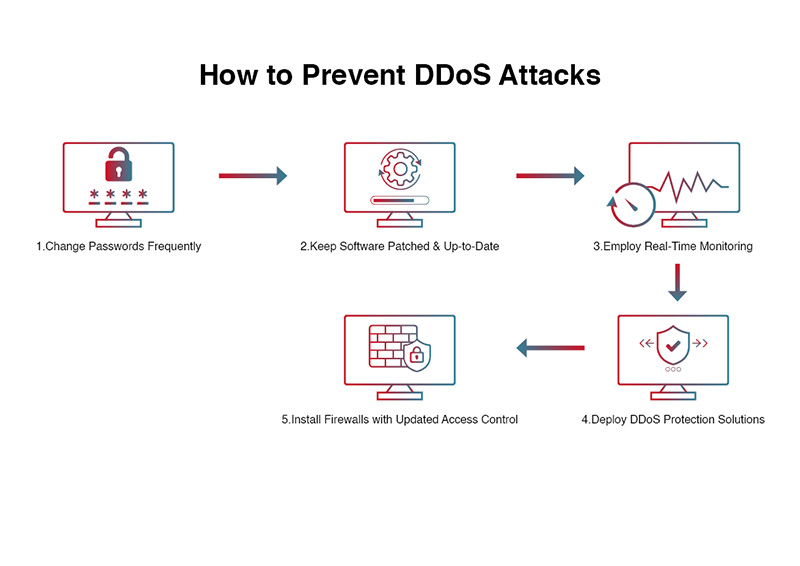How to Prevent DDoS Attacks on Network
Protecting your network from DDoS (Distributed Denial of Service) attacks is crucial in today’s digital landscape. These attacks aim to overwhelm network resources, making services unavailable to legitimate users. Here are some effective strategies to prevent DDoS attacks on your network:
1. Implement DDoS Detection and Mitigation Tools
One of the first steps in preventing DDoS attacks is to implement detection and mitigation tools on your network. These tools can help identify and mitigate malicious traffic before it causes disruption. Popular tools include Cloudflare, Akamai, and Arbor Networks.
2. Increase Network Bandwidth
Increasing your network bandwidth can help absorb the impact of DDoS attacks. By having more bandwidth available, your network can handle a larger volume of traffic, making it more difficult for attackers to overwhelm your resources. Consider upgrading your internet connection or adding redundant links to increase bandwidth.
3. Configure Firewalls and Routers
Properly configuring firewalls and routers can help block malicious traffic and prevent DDoS attacks from reaching your network. Ensure that your firewalls are up-to-date and configured to block suspicious traffic. Implementing intrusion detection and prevention systems can also help identify and stop DDoS attacks in real-time.
4. Use Content Delivery Networks (CDNs)
Utilizing Content Delivery Networks (CDNs) can help distribute network traffic across multiple servers, reducing the impact of DDoS attacks. CDNs cache content closer to users, improving load times and reducing the strain on your network. Popular CDNs include Cloudflare, Akamai, and Fastly.
5. Deploy Intrusion Prevention Systems (IPS)
Deploying Intrusion Prevention Systems (IPS) can help detect and block DDoS attacks at the network level. IPS devices monitor network traffic for anomalies and can automatically block suspicious activity. By deploying IPS, you can proactively protect your network from DDoS attacks.
6. Conduct Regular Security Audits
Regularly conducting security audits can help identify vulnerabilities in your network infrastructure that could be exploited by DDoS attackers. Work with security professionals to perform penetration testing and vulnerability assessments to ensure that your network is secure from potential threats.
7. Develop an Incident Response Plan
Developing an incident response plan is crucial in the event of a DDoS attack on your network. Outline the steps to take in case of an attack, including who to contact, how to mitigate the impact, and how to restore services. By having a well-defined incident response plan, you can minimize the damage caused by DDoS attacks.
Conclusion
Preventing DDoS attacks on your network requires a combination of proactive measures, such as implementing detection and mitigation tools, increasing network bandwidth, configuring firewalls and routers, using CDNs, deploying IPS, conducting security audits, and developing an incident response plan. By implementing these strategies, you can protect your network from DDoS attacks and ensure the uninterrupted availability of your services to legitimate users.
